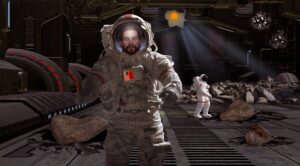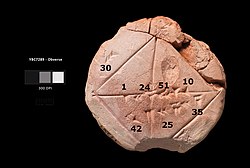[ST Ref: PT-B1-C4_220625: ‘Planetoid Trilogy’, ‘Star Island’, Chapter Four: “Dry River Cave”.]

New Character
SP: Barrie, in Chapter Four of ‘Star Island‘, the first book of your Planetoid Trilogy, you introduce a new character, Dr James Anderson, Jimmy, to his friends. I can understand you having such a character in an adventure story about an ancient treasure city or similar, but in a Science Fiction novel?
BC: Its not so silly, Ian. In fiction, and even speculative non-fiction, ancient ruins have been linked to alien artifacts and encounters in the popular mind.
SP: Yes, of course. But isn’t your tale in the hard science fiction genre? Serious scientist don’t generally accept the concept of aliens influencing ancient human cultures and their architecture.
Novel a Hybrid of Hard and Soft S.F.
BC: Well, two things: firstly my Planetoid novel is an hybrid of both hard and soft science fiction; secondly, even serious scientists would want to investigate an archaeological site which didn’t fit the normal criteria of ancient architecture. In this case Jimmy first sees the site on an internet video channel and recognizes that there is something very odd about it.
SP: OK, we don’t want to reveal any spoilers. But you see Jimmy as important to your plot?
BC: Oh yes. Very definitely. He is very important to the story.
SP: What is your view of claims that the Egyptian Pyramids were designed, maybe even built, by aliens?
Aliens and Ancient Architecture
BC: My personal view is that we sometimes greatly underestimate the ingenuity of our ancient forebears. As an engineer, it seems completely reasonable to accept that the ancient Egyptians had highly educated and trained engineers and technicians who understood trigonometry and other aspects of geometry. Also that they devised and used simple levers and lifting devices, and used water to set levels. There is ample evidence that they manufactured and used simple tools for cutting and drilling soft stone, and even hard stone. Apparently the copper mined in Egypt in those times contained trace elements that made it harder and more useful for carving and cutting stone than pure copper. There are many reasons why archaeologists believe that the Egyptians did not need any outside help or technology (apart, perhaps, from time to time from their neighbours, such as the Sumerians). The date of erection of the Pyramids may be in question, I don’t know. I am not a student of ancient Egyptian technology and I am not familiar with the time lines for their architecture. The Pyramids do not feature in my story.

SP: But you feature aliens in your story. Aren’t you placing a quid both ways?
Fictional Alien Artifacts
BC: (smiles) You might say so, but no. The ‘artifacts’ that I attribute to aliens are fictional, just like my aliens. I am not claiming that aliens have built anything that is already in the human public historic or architectural domain.
SP: They are all introduced or off planet?
BC: Precisely.
SP: Are we guilty of revealing a spoiler?
Spoiler?
BC: Maybe, but I am defending my claim that my story is largely hard science fiction, apart from a dash or two of soft genre aspects, such as the aliens and futuristic alien technology.
SP: Would you advise your readers not to read these posts?
BC: Only if they are very sensitive to the interface between hard and soft S.F. (winks).
SP: Perhaps we best leave it there then, Barrie. Thank you for your answers to my questions.
BC: Thank you for asking your questions, Ian. As always, it has been a pleasure.